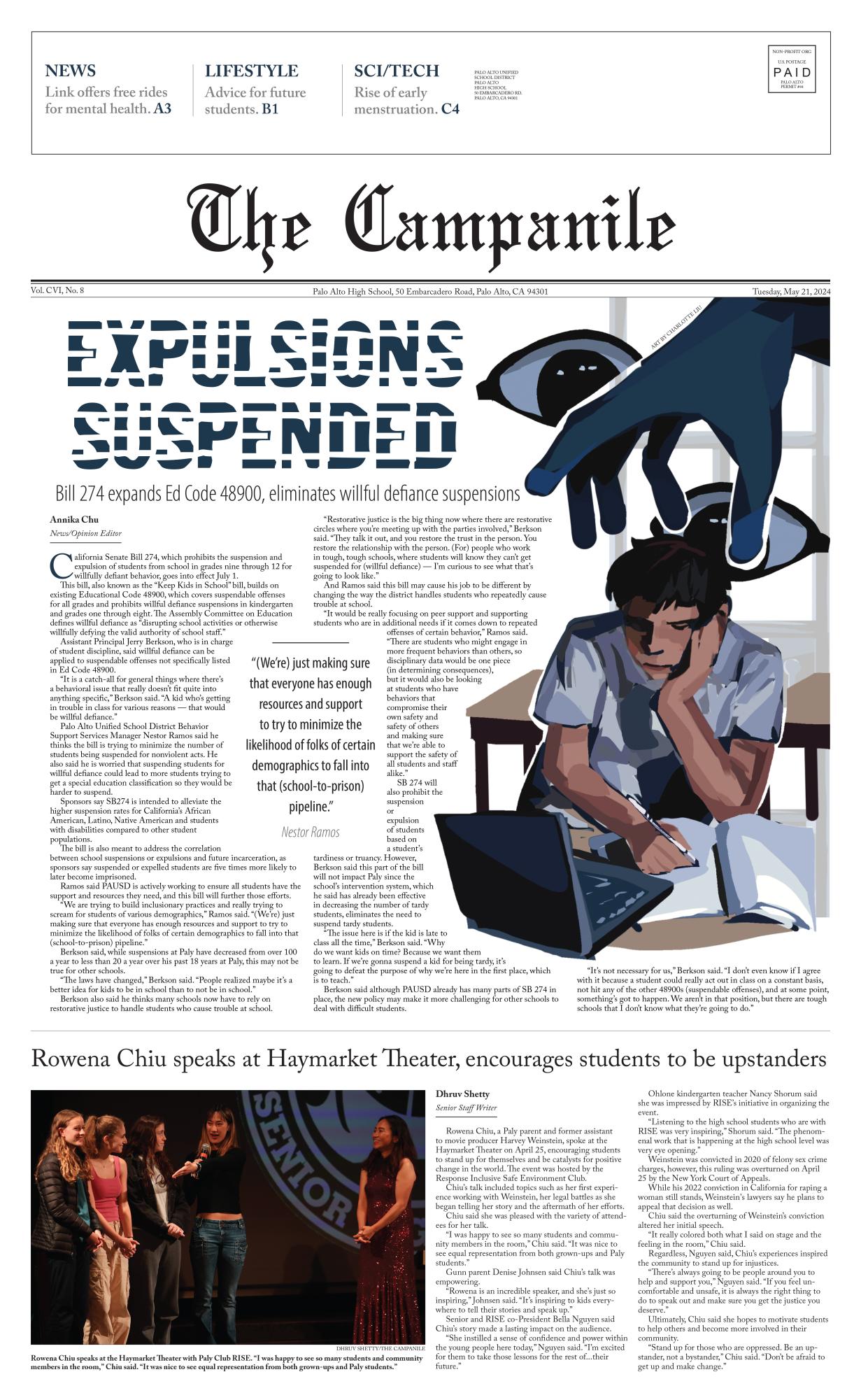After Palo Alto High School’s most recent Western Association of Schools and Colleges (WASC) self-study reports were released mid-February, Paly’s administration has prioritized closing the achievement gap, creating a cultural shift and implementing courses which are more consistently aligned as its goals for its future school year. The WASC self-study reports, released every six years, provide a detailed look at both parents’ and students’ perspectives on important issues that are often discussed by high-school students. In order to release these student reports, WASC carried out an in-depth study by conducting surveys, having focus groups and holding regular meetings with a leadership team consisting of Paly staff, parents and participating students.
As a result of the reports that were released this past month, Paly’s and Gunn High School’s WASC teams identified three paramount issues, or “critical learner needs,” for their students. Both Gunn and Paly indicated school culture and the achievement gap as critical needs, and while Paly identified greater curriculum consistency as its third goal, Gunn elected to focus on better data collection as an objective for its students.
According to the WASC reports, the majority of Paly students hope to see the inconsistencies both in grading and in courses addressed, claiming that clear differences between teachers of the same course as well as grade deflation are prevalent in current curriculum. According to Principal Kim Diorio, Paly is aiming to develop more common assessments and syllabi for a variety of different courses so that all homework and general evaluations of student work will be better aligned.
Sophomore Michelle Leong believes that the administration’s choice to focus on aligning courses is an essential step for Paly to take and is a crucial area of improvement for the future.
“I’ve definitely noticed a lot of inconsistencies in different teachers, which is inherently unfair for students,” Leong said. “Grades should indicate students’ performance consistently in all scenarios, which is impossible when teachers have such different curricula and assessments. I think it’s great that the WASC reports have shown Paly students’ perspectives on the differences that exist between the same courses, and Paly administration’s choice to outline the topic of aligning courses as one of its goals is showing that the administration is taking this issue seriously.”
Another major goal that has been identified by Paly administration is shifting its school culture and climate.
In past years, students at both Gunn and Paly have noticed that the general attitude towards success is narrow and traditional, and the School Board hopes to counter this conventional definition of success with one that is more accepting and empathic. WASC reports have revealed similar levels of satisfaction at both high schools concerning the social and emotional climate; at Paly, 37 percent of students reported being very satisfied and 37 percent reported being only somewhat satisfied with their social and emotional experience at school, while at Gunn, around 75 percent of students were either satisfied or somewhat satisfied with their school climate. The WASC report cited Paly’s counseling model, which consists of three tiers of support for students, as a beneficial and valuable tool for improving students’ social and emotional issues.
Paly’s third choice for a crucial area of improvement was the achievement gap, which refers to the disparity of academic performance between different groups of students and which been outlined as a major concern during the past years. During a meeting with the school board after the release of the WASC reports, both Gunn and Paly principals announced their plans to address the achievement gap by creating more personalized learning, developing intervention programs and increasing teachers’ professional development. School board member Ken Dauber encouraged both schools’ principals to consider developing new strategies so that Palo Alto Unified School District’s (PAUSD) high schools will be able to become more successful in closing the achievement gap for its future school years.
Ultimately, PAUSD superintendent Max McGee believes that these goals of Paly and Gunn will be successfully addressed in the upcoming years and hopes to see significant improvement.
“These plans aren’t going to sit on the desk for six years,” McGee said at the school board meeting following the release of the WASC reports. “They are data driven, they are actionable and they are urgent.”








